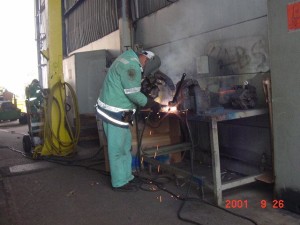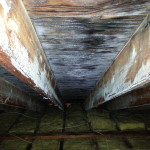 The quality of indoor air inside of offices, schools and other workplaces is important not only for employee and occupant comfort, but for their health and safety as well. When occupants complain that the air quality in a workplace is not comfortable, we classify that complaint under “Tight Building Syndrome”. When there are complaints of illness including headaches, fatigue and irritation of the eyes, nose and throat, we classify that condition under “Sick Building Syndrome”. In many cases the symptoms stop when the person leaves the building. This is an indication that the building air quality may be at fault. The World Health Organization estimates that more than half of all asthma cases and allergic-type responses are due to indoor air contaminants. The WHO has even named a disease that they call “Building Induced Asthma”.
The quality of indoor air inside of offices, schools and other workplaces is important not only for employee and occupant comfort, but for their health and safety as well. When occupants complain that the air quality in a workplace is not comfortable, we classify that complaint under “Tight Building Syndrome”. When there are complaints of illness including headaches, fatigue and irritation of the eyes, nose and throat, we classify that condition under “Sick Building Syndrome”. In many cases the symptoms stop when the person leaves the building. This is an indication that the building air quality may be at fault. The World Health Organization estimates that more than half of all asthma cases and allergic-type responses are due to indoor air contaminants. The WHO has even named a disease that they call “Building Induced Asthma”.
There are many causes of poor indoor air quality and we test for them all, including:
– Chemical Contaminant Sources (VOC’s, formaldehyde, pesticides)
– Biological Contaminants (mold, bacteria, allergens)
– Particulate Contaminants (asbestos, silica, respirable dust)
– Moisture and Humidity Control
– Fresh Air Ventilation
– Thermal Comfort
We have a team of trained professionals with years of experience that can help you achieve better indoor environmental conditions. If there is a problem with air quality, we will find it and develop a practical plan to solve the problem. Whether it is an issue with localized mold activity or a problem with inadequate fresh air ventilation, we can identify the cause and the solution.
Air Consulting Services, LLC specializes in analyzing commercial indoor air quality to ensure that existing health and safety standards are achieved.
Call us today at (609) 371-2489 to schedule your analysis.
Inspection Process
The inspection begins with a walkthrough inspection. This allows us to determine the building construction and operating characteristics. Special attention is paid to the ventilation systems, since modern commercial buildings are so dependent on mechanical ventilation. The outcome of our inspection is to establish a set of hypotheses that identify suspect conditions. Testing is designed to test the hypotheses. From this information we are able to provide a scientific analysis and recommend a plan to alleviate the indoor air quality problem.
Commercial buildings are not occupied continuously like our homes, but many folks spend a lot of time at work. Indoor air quality problems can become significant because the systems and materials in commercial buildings tend to be large and complicated. We work with the building management and maintenance staff to identify the problems and focus on the solutions. Our objective is to help you achieve the most healthy and productive building conditions possible.
